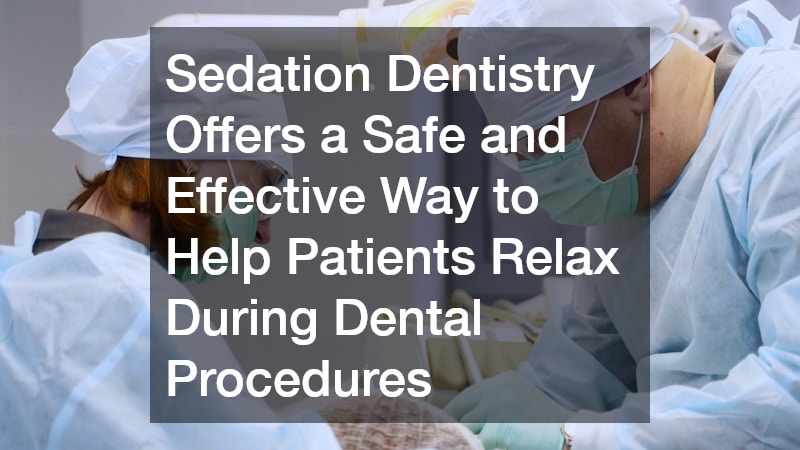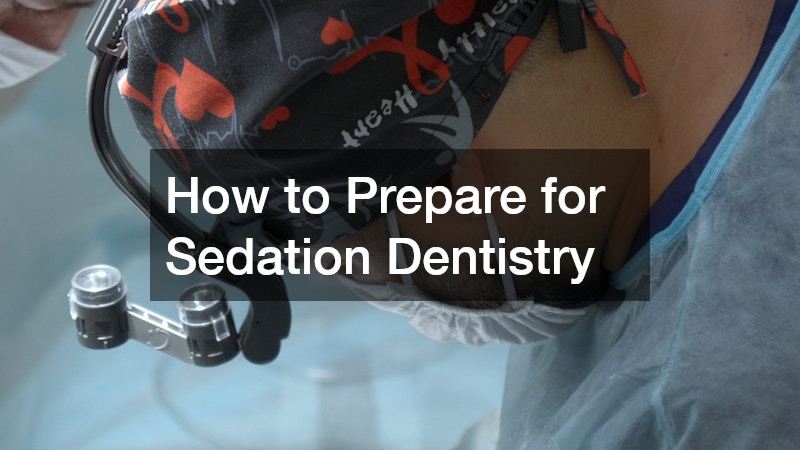For many people, visiting the dentist can be a nerve-wracking experience. Whether it’s due to fear of pain, bad past experiences, or generalized anxiety, dental visits are often avoided until absolutely necessary. Fortunately, sedation dentistry offers a safe and effective way to help patients relax during dental procedures.
However, to ensure a smooth and successful experience, preparation is key. From the initial consultation to post-procedure care, knowing what to expect and how to prepare will help you feel more in control and confident throughout the process.
In this guide, we’ll cover everything you need to know about preparing for sedation dentistry—including what to discuss with your dentist, how to prepare on the day of the procedure, and what to expect during recovery.
What Should I Discuss During My Initial Consultation?
Before any sedation is administered, your dentist will conduct a thorough consultation. This is the time to be open and honest about your medical history, current medications, and emotional state regarding dental procedures.
Medical History and Current Medications
Your dentist needs to know about any chronic conditions, such as heart disease, diabetes, high blood pressure, sleep apnea, or respiratory issues. These can influence which sedation method is safest for you.
Make a list of:
- Prescription medications
- Over-the-counter drugs
- Herbal supplements
- Any allergies (especially to medications)
Certain medications can interact with sedatives or affect how your body processes them. Full transparency ensures your safety.
Addressing Dental Anxiety
If you suffer from mild to severe dental anxiety, let your dentist know. The level of anxiety can help determine which type of sedation is most appropriate:
- Nitrous oxide (laughing gas) for mild anxiety
- Oral sedation for moderate anxiety
- IV sedation for more serious cases or complex procedures
Communicating your fears allows the dental team to provide not only the right sedation level but also emotional support throughout your visit.
Understanding the Types of Sedation Options
There are different types of sedation used in dentistry. Your dentist will explain the pros and cons of each:
- Nitrous oxide: Light sedation, wears off quickly, and you can typically drive yourself home.
- Oral sedation: Pill form, provides deeper relaxation but requires someone to drive you.
- IV sedation: Administered through a vein for quick and controlled sedation, typically used for surgical procedures or high-anxiety patients.
- General anesthesia: Rarely used for routine dental care, but may be an option in specialized settings for extensive or highly invasive treatments.
Your dentist will recommend the most suitable type based on your health profile, procedure length, and anxiety level.
How Do I Prepare On the Day of the Procedure?
Proper preparation on the day of your appointment ensures both safety and comfort during your dental procedure.
Fasting and Food Intake
Depending on the sedation type, your dentist may instruct you to avoid eating or drinking for a certain period before your appointment—typically:
- Oral or IV sedation: No food or drink (including water) for at least 6–8 hours before the procedure.
- Nitrous oxide: Minimal fasting may be required, but following your dentist’s advice is key.
Ignoring these instructions can increase the risk of nausea or aspiration during the procedure.
Clothing and Comfort
Wear loose, comfortable clothing, ideally with short sleeves if you’re receiving IV sedation. Avoid wearing jewelry, makeup, perfume, or nail polish, as these can interfere with monitoring equipment or sedation access points.
Bring lip balm—sedation can cause your lips to dry out, and moisturizing beforehand can help.
Transportation Arrangements
For oral or IV sedation, you’ll be unable to drive yourself home after the procedure. Arrange for:
- A responsible adult to drive you to and from the appointment
- Someone to stay with you for a few hours afterward, especially if you’re still groggy or disoriented
Some dental offices may require written confirmation of your ride before proceeding with sedation.
What Should I Expect During Recovery?
Recovery from sedation dentistry varies depending on the sedation method used, but most patients can return to normal activities within a day or so. Still, following aftercare guidelines is important.
Immediate Aftercare Tips
- Rest for the remainder of the day. Avoid operating machinery, driving, or making important decisions until the sedation fully wears off.
- Drink water and eat soft, light foods as recommended.
- Follow medication instructions, including antibiotics or pain relievers if prescribed.
- Monitor for side effects such as nausea, dizziness, or confusion. These are normal but should subside within a few hours.
If IV sedation was used, you may have slight bruising at the IV site, which should resolve on its own.
Pain Management and Complications
If your procedure involved surgery or extensive dental work, your dentist may prescribe or recommend over-the-counter pain relief. It’s important to:
- Take medications as directed
- Avoid aspirin unless approved (it can increase bleeding)
- Call your dentist if you experience prolonged pain, bleeding, or swelling
Complications with sedation are rare, especially when performed by trained professionals, but always report anything unusual—like breathing difficulties, fever, or signs of infection.
Follow-Up Appointments
Your dentist will typically schedule a follow-up visit to monitor healing and assess the success of your procedure. This is also a good opportunity to ask any remaining questions about oral hygiene, long-term care, or future treatments.
Sedation dentistry can be a game-changer for patients who experience anxiety or need complex dental treatments. With the right preparation and communication, your experience can be comfortable, safe, and stress-free.
To recap:
- Discuss your full medical history and anxiety levels during your initial consultation
- Follow all pre-procedure instructions, including fasting and arranging transportation
- Take it easy after your appointment and follow the aftercare guidelines carefully
Remember, your dental team is there to support you every step of the way. By preparing thoroughly and asking the right questions, you can ensure a smooth sedation dentistry experience—and take a major step toward better oral health.

